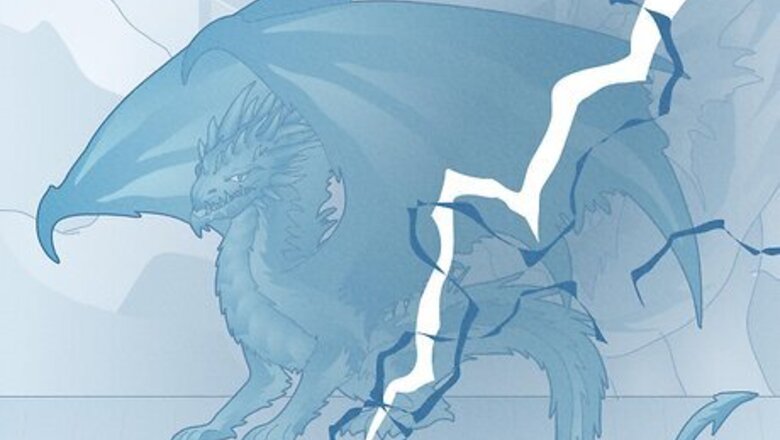
views
What is an ancient blue dragon in D&D 5e?

Ancient blue dragons are legendary monsters that command lightning. When a dragon reaches 801 years of age, it’s considered “ancient.” Ancient blue dragons are the oldest, largest, and most powerful of their kind, usually native to deserts or other barren landscapes. They’re lawful evil and considered clever, cruel, and manipulative, with the power to breathe out lightning. Armor class: 22 (natural armor) Hit points: 481 (26d20 + 208) Speed: 40 feet (walking), 40 feet (burrowing), and 80 feet (flying) Size: Gargantuan Ability scores: STR 29 (+9), DEX 10 (+0), CON 27 (+8), INT 18 (+4), WIS 17 (+3), CHA 21 (+5) Saving throws: DEX +7, CON +15, WIS +10, and CHA +12 Skills: +17 Perception and +7 Stealth Damage immunities: Lightning Senses: Blindsight 60 feet, Darkvision 120 feet, Passive Perception 27 Languages: Common and Draconic Challenge: 23 (worth 50,000 experience points)
Ancient Blue Dragon Traits & Attacks
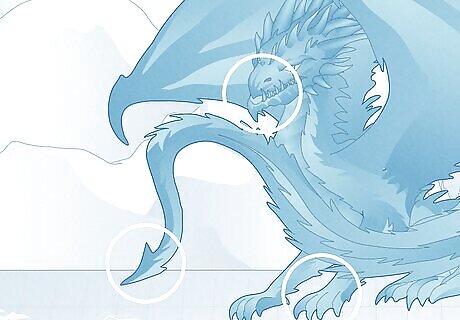
Multiattack Ancient blue dragons can deal an impressive 3 attacks per turn—and that’s after using Frightful Presence. They can make one bite attack per turn and two claw attacks in total. It can also make attacks with its tail, which are generally reserved for the dragon’s legendary actions (described below). Bite. Bite attacks have a reach of 15 feet. They deal 2d10 + 9 (an average of 20) piercing damage plus 2d10 (an average of 11) lightning damage per hit. Claw. Claw attacks have a reach of 10 feet. They deal 2d6 + 9 (an average of 16) slashing damage. Tail. Tail attacks have a reach of 20 feet. They deal 2d8 + 9 (an average of 18) bludgeoning damage. All 3 attacks have a +16 to hit and can affect 1 target per attack.
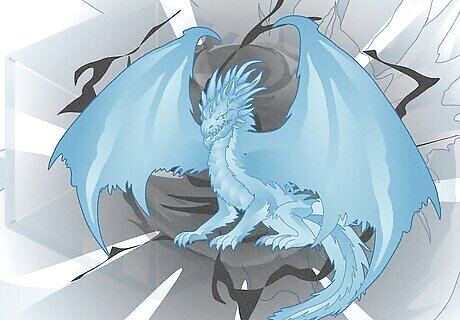
Frightful Presence When an ancient blue dragon activates its Frightful Presence ability, every creature of its choice within 120 feet must make a DC (difficulty class) 20 Wisdom saving throw. If they fail, they become frightened for 1 minute—though affected creatures can repeat the saving throw at the end of each turn. If they pass the save, they’re immune to Frightful Presence for the next 24 hours. While frightened, PCs have disadvantage on ability checks and attack rolls. While they can see the source of their fear (in this case, the dragon), they can’t move closer to it.
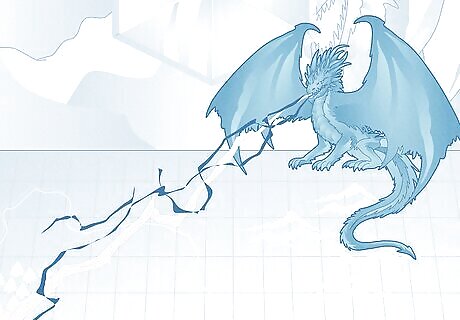
Lightning Breath The ancient blue dragon’s other major attack is its lightning breath! The dragon can exhale lightning in a straight line that’s 120 feet long and 10 feet wide. Any creatures caught in this line must make a DC 23 Dexterity saving throw; on a failure, they take 16d10 (for an average of 88) lightning damage. On a successful save, they take half of that damage. 88 points of damage is a tremendous amount, and a 23 DC for a Dexterity save is quite high, too—which shows why ancient blue dragons are such tough enemies!
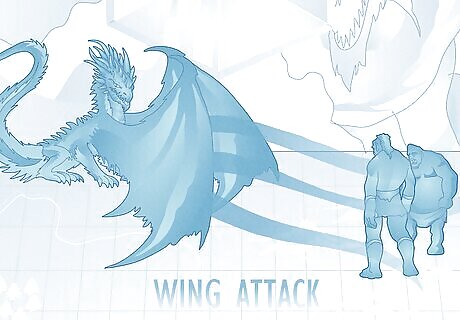
Legendary actions Because they’re legendary creatures, ancient blue dragons get legendary actions, which are special actions that can be used at the end of another creature’s turn. They get 3 legendary actions per turn, with any spent actions regained at the start of the dragon’s next turn. Just remember: you can only use 1 legendary action at a time! They include: Detect. The dragon can make a Perception check to detect hidden or sneaking creatures. Tail attack. The ancient blue dragon can make a single tail attack. Wing attack (2 actions). When used, every creature within 15 feet of the dragon must succeed a DC 24 Dexterity saving throw or take 2d6 + 9 bludgeoning damage and be knocked prone. After, the dragon can fly up to half its flying speed.
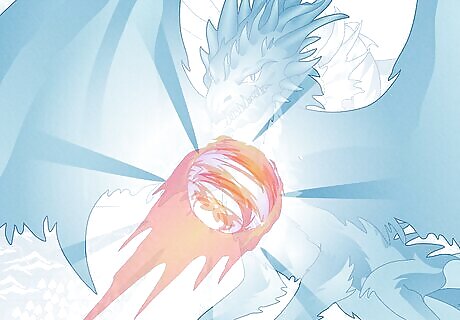
Legendary resistances Legendary creatures also get legendary resistances. This means that, if the dragon fails a saving throw, it can use a legendary resistance to succeed instead. Ancient blue dragons get 3 legendary resistances daily and only recover spent resistances the day after using them. For example, if you cast Fireball at the dragon and it fails its initial Dexterity saving throw, the dragon could use a legendary resistance to succeed. If the dragon had all 3 legendary saves before the Fireball spell, it’d only have 2 left after using one to succeed the Dexterity save.
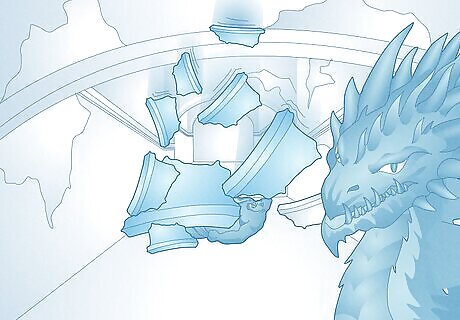
Lair actions Lair actions are special effects that happen on initiative count 20 of each round, assuming the battle takes place inside the dragon’s lair. On initiative count 20, the dragon can activate a lair action, causing one effect to happen; however, it can’t use the same effect for 2 rounds in a row. Lair actions include: Ceiling collapse. The ceiling collapses above a creature that the dragon can see within 120 feet. The creature must make a DC 15 Dexterity save or take 3d6 bludgeoning damage and be knocked prone and buried (restrained). Creatures buried by rubble can’t breathe or stand up, but they can use an action to make a DC 10 Strength check (and end the buried state if they succeed). Sand cloud. The dragon can cause a 20-foot-radius cloud of sand to appear, centered on a point within 120 feet. Creatures inside the cloud must pass a DC 15 Constitution saving throw or be blinded for 1 minute. However, affected creatures can repeat the saving throw at the end of each turn! Lightning arc. The dragon can cause 5-foot-wide lightning arcs to form a 5-foot-wide line between solid surfaces. Creatures in a line must make a DC 15 Dexterity save, taking 3d6 lightning damage on a failure. The arcs must be within 120 feet of each other and the dragon.
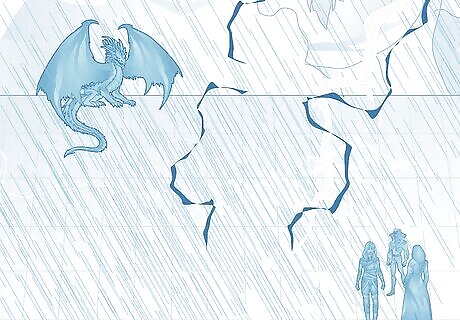
Regional effects Especially powerful creatures also have regional effects, meaning their presence warps the region and land around them. Ancient blue dragons can alter the area around their lair with magic, with regional effects including: Thunderstorms that linger within 6 miles of the dragon’s lair. Dust devils that roam within 6 miles of the lair. They have air elemental statistics, but they can’t fly, have a speed of 50 feet, and have Intelligence and Charisma scores of 1. Hidden sinkholes that form around the lair (and inside it). They can be spotted with a DC 20 Perception check; if unnoticed, the first creature to step on one must pass a DC 15 Dexterity save or fall 1d6 x 10 feet into the hole. After an ancient blue dragon dies, the dust devils vanish right away, and the thunderstorms fade after 1d10 days. Any sinkholes remain, however.
How to Run Ancient Blue Dragons as a DM
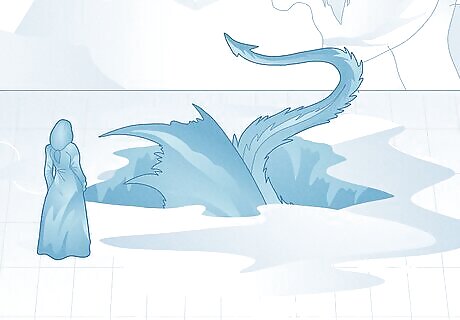
Design an underground desert lair for the blue dragon. According to the 5e Monster Manual, blue dragons tend to dwell in barren places—especially deserts—and have a burrowing ability, meaning their lairs are usually underground. Since dragon lairs come with lair actions, try to stage the battle in the dragon’s underground lair so you can make the fight a true challenge for players! Since ancient blue dragon lairs are often burrowed, you could even make it a multi-level lair—lots of tunnels and huge, sandy caverns large enough for the dragon to spread its wings in.

Attack multiple PCs from a distance with the dragon’s lightning breath. Dragons have powerful breath attacks—and since ancient blue dragons are skilled tacticians, they’ll likely use their lightning breath to weaken PCs as soon as possible. Have the blue dragon try to catch as many PCs as possible in its lightning breath, lining up the attack to deal maximum damage. Since the dragon’s lightning breath is 10 feet wide and travels in a 120-foot line, study the battlefield to see how the PCs are grouped. Are multiple PCs standing within 10 feet of one another? Or, if not, are several PCs standing in a line? For example, if one PC is right in front of the dragon and another is behind them about 40 feet back, the dragon could potentially line up a breath attack to target both PCs.

Use the dragon’s lair actions to target and impede spellcasters. The cloud of sand lair action is especially helpful because it blinds creatures, and many spells require a line of sight to cast. So, try to target spellcasters with this action; once blinded, they’ll be unable to cast certain spells, making the battle more of a challenge. The blue dragon’s ceiling collapse ability (which directly ties back to their habit of burrowing into desert lairs) can also be helpful when targeting PCs with low Strength and Dexterity (like spellcasters).
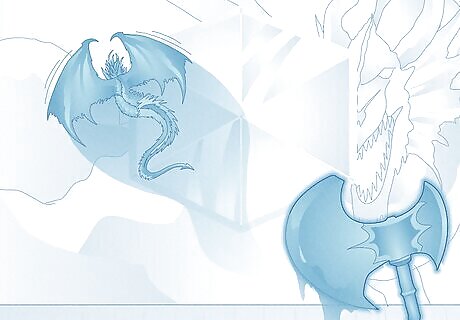
Have the dragon fly (or burrow) away when seriously wounded. Most dragons won’t hesitate to make a tactical retreat, and blue dragons are both patient and calculating—so if it seems like the party is backing the dragon into a corner, have it start flying away. You could spend a couple of rounds shooting lightning from afar—or, if the dragon is close to death, have it leave the area altogether. For example, if the party has multiple melee fighters (like barbarians or paladins) dealing damage to the dragon every round, having the dragon shoot lightning from the air is a great way to stay out of the range of those fighters. Use the dragon’s legendary wing attack before flying away. That way, you’ll have a chance to knock any melee fighters prone and avoid their opportunity attacks. A blue dragon won’t give up, so if it survives the encounter with the party and retreats, it should absolutely return for a rematch when it has gathered its strength!
How to Defeat Ancient Blue Dragons as a Player
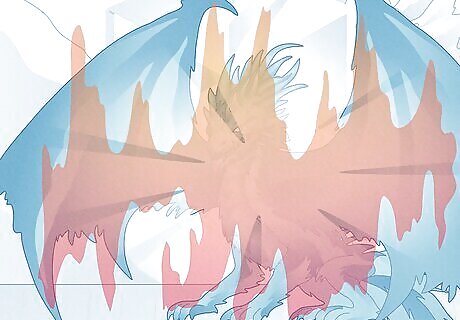
Burn through the dragon’s legendary resistances as soon as possible. Legendary resistances can keep some of your PC’s best spells and special abilities from damaging the dragon, so try to get those resistances out of the way. Force the dragon to make saving throws (ideally Dexterity or Intelligence, its two lowest saves) to exhaust its 3 legendary saves before targeting it with your best spells and abilities. After an ancient blue dragon runs out of legendary saves, it won’t be able to succeed in future saving throws automatically. That’s why it’s so important to exhaust them if possible!
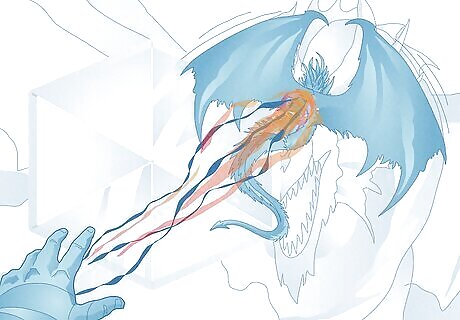
Prepare ranged attacks to target the dragon midair. All dragons are capable of flight, and ancient blue dragons are wickedly intelligent—meaning they know when it’s better to get away from the party’s melee fighters and attack from a distance. To ensure the dragon can’t escape your attacks, even while flying, use ranged spells and weapons against it. For example, spells like Eldritch Blast, Fire Bolt, Magic Missile, Scorching Ray, Fireball, and Bigby’s Hand all have a range of at least 120 feet, making them handy when targeting a creature from afar. Similarly, longbows and other ranged weapons can reach dragons while flying—so if you’re playing a PC with proficiency in ranged weapons, be sure to bring one.

Ensure you have plenty of healing spells and potions ready. With their attacks, lightning breath, and legendary actions, ancient blue dragons can deal a lot of damage in a very short period of time—so healing can be the key to surviving a fight with one! If you’re playing a cleric (or the party’s designated healer), be sure to prepare healing spells before fighting the dragon. It’s also good to stock up on healing potions before battling a legendary monster. Healing potions can usually be found at magic or potion shops in settlements; your DM may determine exactly where they can be bought. Distribute healing potions to every PC in the party. That way, any injured PC can quickly heal themselves in battle!




















Comments
0 comment